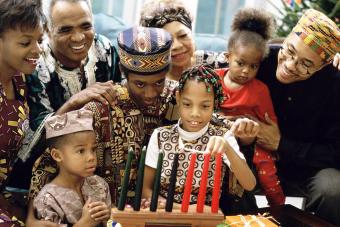
Guided reading activities help children focus on reading comprehension by providing a context in which to read. The structured reading activities can take many forms but they are most effective when implemented in small groups or in one-on-one situations. The activities are not intended for large groups because to be successful, they require a substantial and constant amount of feedback from the teacher to the student.
Ideas for Guided Reading Activities
There are as many ways of doing guided reading as there are ways of teaching reading. What works for one student might not work for another. However, the goal for the teacher is to get the student thinking about what they're reading before, during and after the reading selection. Doing this, helps kids process the information and remember what they read.
KWL
KWL is an acronym for a popular model in guided reading. It stands for:
- What do you know about the book/story/topic at hand already?
- What do you want to know or what questions do you have?
- What did you learn by reading this selection?
The student answers the first two questions. For non-fiction, answering what you already know about a given topic is a little easier but if you're reading fiction, you can also encourage the student to think about what they know about the book based on the cover, the titles of the chapters, or the back jacket flap. The idea is to just prepare for what's going to be read. The second question can be addressed in the same way. Perhaps the title or cover art suggests a conflict or a particular character's emotion.
After the reading, having students talk about what they learned, what they didn't understand, etc. is a good way to assess and help them process the information. Remember that as a teacher, you should facilitate. If a student says he didn't like the part where character "a" was sad, ask how the student knows that the character is sad? In this way, forcing the student to go back through the story and recall supporting details, you can start to build reading comprehension.
Vocabulary
You will help struggling students immensely if you introduce vocabulary before and during the reading selection. Choose words that the students are not familiar with, and have them find or define the words. As you read the selection, make sure to pick out the vocabulary words. To further increase vocabulary, encourage students to use new vocabulary words in their writing and/or in the context of daily conversation.
Predictions
Predicting what is going to happen is a common guided reading strategy. This can be in the form of writing down predictions and then charting whether or not they were accurate or simply asking, "What do you think will happen next?" Predicting is an important reading comprehension skill.
After the Book
Much of guided reading instruction focuses on what happens before or during the book but it's important not to forget to do things after reading the book.
Book Themes
The easiest way to incorporate guided reading into non-fiction books is to choose a theme, read one or more books that have to do with the theme, and then do some activities that are appropriate and go along with the theme. Following up a book with appropriate activities helps the student understand the story better by creating a larger context or framework for the student to work in.
Responses to Literature
One common guided reading activity to finish a book is to have students respond to the book. Modeling good writing strategies, students can respond to the book with questions, or more commonly, simply tell what they liked or didn't like and why. Having to explain why in answer to post-reading activities really helps solidify newly acquired knowledge.
Guided reading helps students really read and understand what they are reading. The goal is to help kids apply the knowledge they are learning to the real world. It can be used with every type and genre and should be teacher facilitated but student led.







